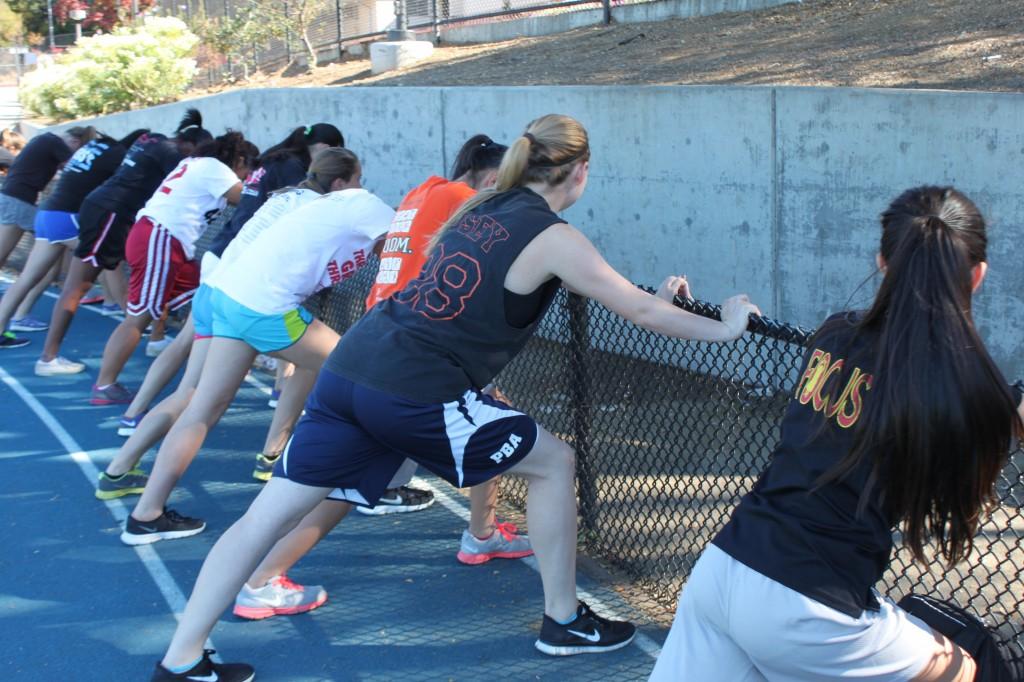Exercising without stretching is like taking a test without studying. Skipping this important step in one’s athletic routine can have serious consequences.
Sure, there will be more time for other practice without stretching, and one may not feel the effects of skipping the warm-up while working out, but athletes run the risk causing injuries that require more than a bit of stretching to be fixed.
Carlmont Athletic Trainer Jessie Little said, “It’s important to get your muscles nice and warm before you participate in sports. If not, you might pull or strain your muscles.”
Girls’ varsity tennis player Morgan Watson stretches every day before practice. Watson said, “It helps us perform better because we are loosened up and our muscles aren’t tense.”
Contrary to popular belief, it is important to stretch both before and after exercising. Many only stretch beforehand to loosen up their muscles.
Little explained the benefits of stretching after exercise: “When you’re working your muscles, they shorten and contract. Stretching after a workout helps lengthen the muscles again.”
Leaving muscles bunched up after a workout can leave them aching. Dancer Sierra Segal said, “Almost consistently when I don’t stretch, I’m incredibly sore.”
Segal also pointed out that if she does not stretch “there is serious danger of pulling a muscle or worse.”
The “worse” category includes long-term injuries that are more difficult to detect. This includes shin splints, microtrauma, tendinitis, or tendinopathy. These are inflammations and forms of infection that often occur due to overuse of a tendon or ligament, which can be damaged when worked without stretching first.
Girls Varsity Basketball Assistant Coach Shannon McMorrow recommended prioritizing leg stretches for her basketball players “because calves get a lot of work when they play basketball.”
McMorrow said, “[I advocate] the heel walk stretch because it helps to prevent shin splints.”
Shin splints are a pain caused in the lower leg by prolonged running on hard, flat surfaces. They can be prevented by taking precautions while exercising, but they take a long time to get rid of once they appear, making stretching look less inconvenient.
This is one example of how a lack of stretching or proper muscle care can lead to more severe injuries, much like not preparing for one test can set back a class grade for an entire semester.
Stretching avidly can improve one’s athletic performance and flexibility.
Little recommended a “head-to-toe dynamic workout. Each stretch should be held for around 45 second, and there should be three to four sets [of stretches] per muscle group.”
Segal said, “Stretching may seem boring or tedious, but it’s really important to maintain the health of your muscles, no matter what type of physical activity you’re doing.”
It is much wiser to take the extra ten minutes to stretch.
Sports are not the place for a lack of preparation. Serious athletes should take care of their bodies and include stretching in their workout routines in order to prevent injury, to avoid post-activity soreness, and to improve performance.


